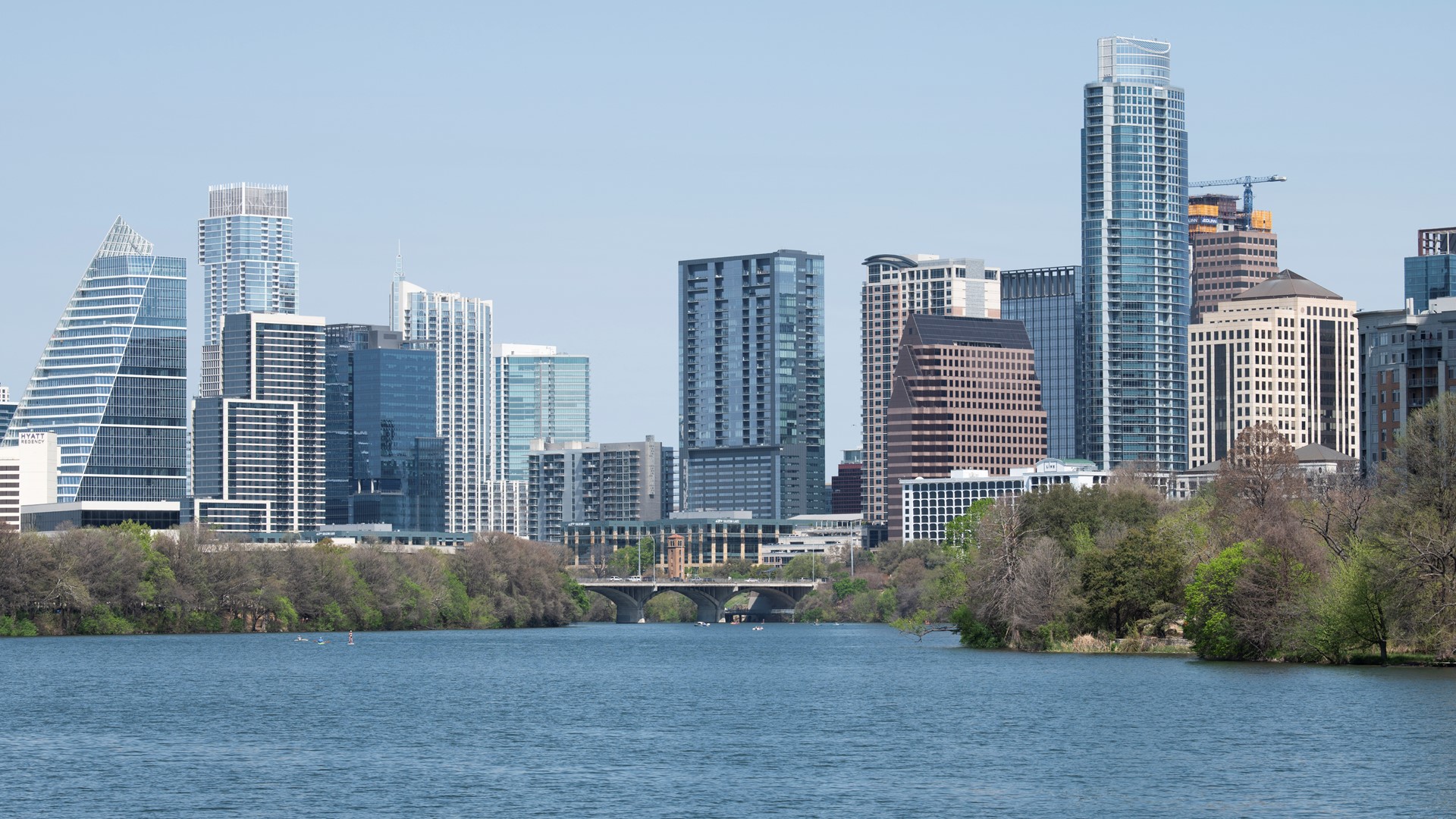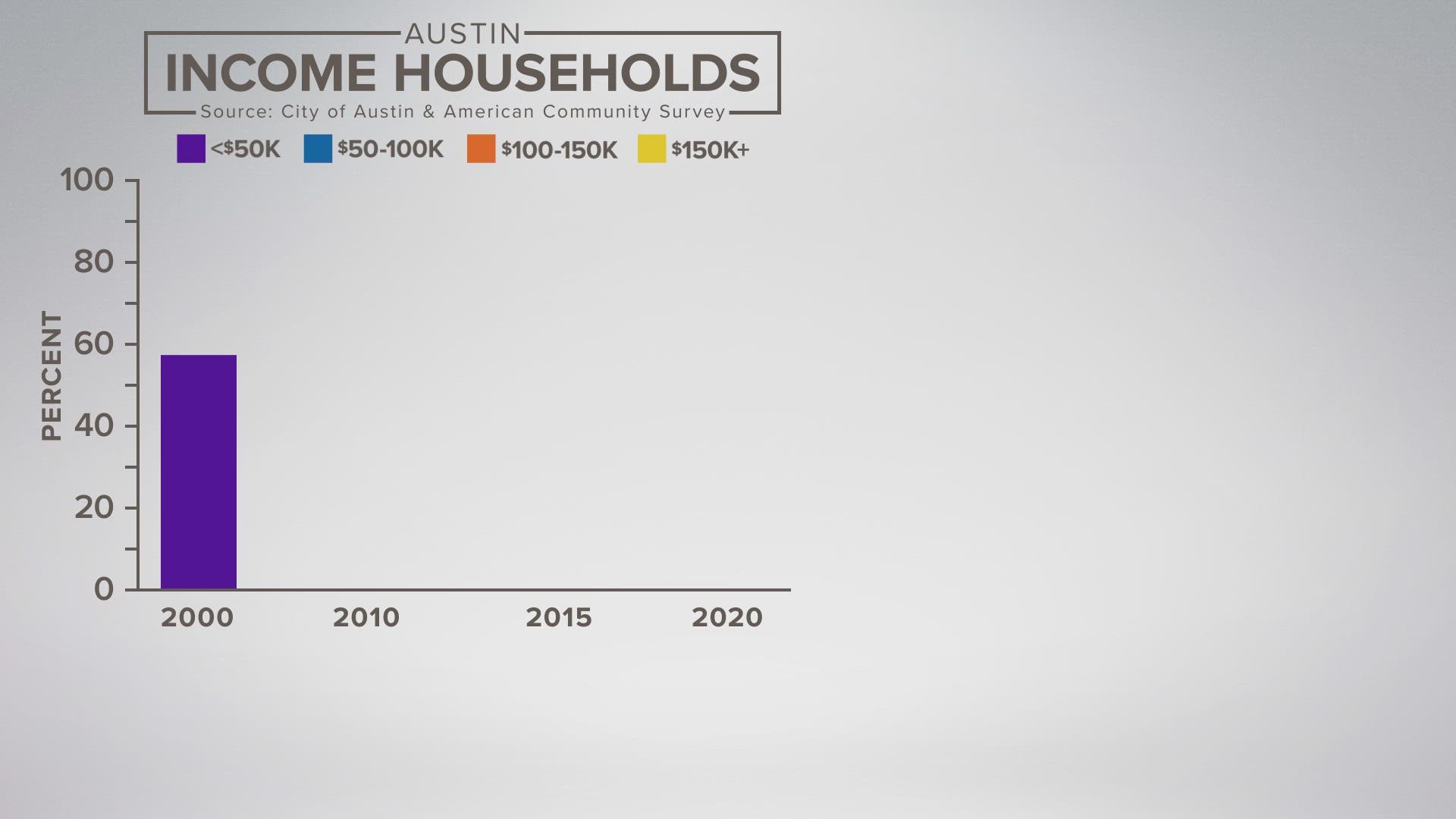AUSTIN, Texas — The Texas population continues to boom, which is both exciting for growth and concerning as the housing market in and around Austin gets more strained.
"It all comes down to there's more demand for housing in Austin, Texas, than the supply that we create, and every year we go into a further supply deficit," Kevin Burns, founder of Urbanspace, said.
"Wages have only gone up about 44% in the last 10 years, but cost of living has gone up much more, and especially now when we're dealing with issues like inflation," Lila Valencia, the City of Austin's demographer, said.
A shortage of housing combined with the relatively slower growth of wages has led to a potentially dangerous financial division among people in Austin, according to Valencia.
The slow growth of wages
"We don't ever want to see a sort of bifurcated income distribution where you have a very small middle class, a very large, really high-income class, and then a relatively smaller low-income class," Valencia said.
According to data and responses collected by Valencia's office and the American Community Survey, the proportion of people in Austin making $150,000 or more has continued to grow between 2000 and 2020 from an estimated 5% of the population to an estimated 20% of the population.
The proportion of people making less than $50,000 in that time frame dropped from an estimated 57% to an estimated 32%. But Valencia said the stagnation she worries about happened for those making between $50,000 and $100,000. The proportion of people making between those amounts stayed relatively the same, hovering around 30% of Austinites.
"That really shows that your city is split in a lot of ways. It could be split in terms of interest. It could start to be split in terms of policies that they push for," Valencia said.
"What we want to do is to help people who are in our city be a part of that booming economy that we keep talking about, that we keep seeing in terms of job growth numbers and employment numbers. We want to make sure that those opportunities are available across the board. No matter what your income bracket is, you should be able to see increases in your wages and be able to progress in terms of opportunities for yourself and for your family and ultimately for your children."
As wages in Austin continue increasing, but at a pace not keeping up with the cost of living, Valencia added the City of Austin cannot leave anyone behind.
"Some people, you know, they are really feeling the squeeze and the pressure of these sort of stagnant wages relative to housing prices that have been going up, prices for child care, prices for transportation as they're having to move farther outside of the city," Valencia said. "We really need to make sure that whatever policies and plans we're putting in place aren't just focused on growth and growth and economic sort of gains in general, but we're also considering all those sections of the population that aren't experiencing that growth, that aren't seeing those gains in their wages."
The strain on housing supply and demand
For Burns, those policies that can help alleviate the pressure on the housing market start with Austin's Land Development Code.
"A lot of this goes back to in the early 80s," Burns said. "We've never been able to catch up since in the 80s, since the city council said, 'You know what, let's not take the federal dollars. Let's not take the state dollars to build out our transportation infrastructure.' We've always been behind the eight ball on transportation."
For Burns, updating the land development code and the city's public transportation would open up the possibilities for greater density, which he said Austin needs.
"That's through simplifying the process of going through all of the red tape that the City of Austin creates, but also further improving our public transportation system and our road infrastructure so that not only do we have the ability to create additional housing through densification of our central city, but also being able to connect housing stock that might be a little further away," Burns said.
Including affordable housing
With density, Burns knows affordable housing would have to be part of the equation. His personal preference would be to require a percentage of affordable housing when developers add housing to an existing building.
"A certain percentage of that additional density should be earmarked for either affordable housing or paying a fee in lieu to be able to build affordable housing somewhere else. So that's a great community benefit that the city can leverage with the private community to provide more affordable housing," Burns said. "Now, the trick to that is if the city asks for too much affordable housing for the additional density, then the developers aren't going to take advantage of it because it costs too much to create, right? Cost of construction. Cost of financing. Cost of land. When you add all those things up, you know, whenever developers provide an affordable housing unit, they're literally writing a check for every unit that's been built because the construction costs usually are greater than what they can sell or lease that residents for at the end of the day."
Burns believes any substantial change to the development code would give the City of Austin a massive, needed boost in housing.
"If they materially change the land-use code and make it very fair to provide the additional density for a manageable amount of additional affordable housing, I think that there would be a rush on the development front from countless developers to try and create that necessary supply," Burns added.
But even if Austin's City Council changed the land development code tomorrow, the results wouldn't be felt for years.
"If everything changed today, the land-use code, we would not see product delivery from those changes for, I would say, something along the lines of 30 to 48 months. So two and a half to four years," Burns warned. "If we punt that change like we have for a long time, then it's just going to further heighten the situation. Like if our city council could have voted for CodeNEXT three years ago when it was ready for its first real vote, we would be seeing the benefits of that today."
PEOPLE ARE ALSO READING:


